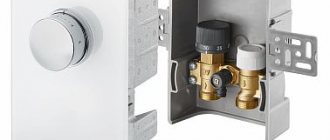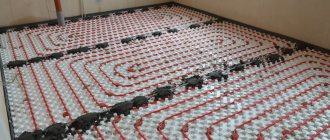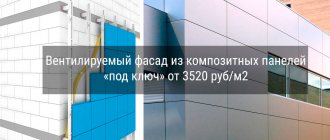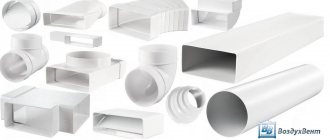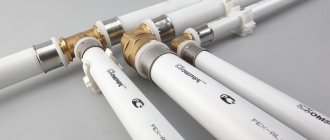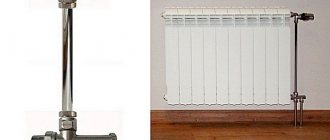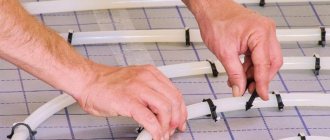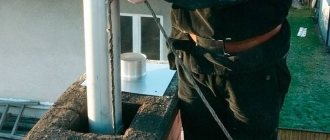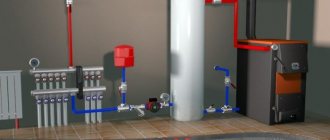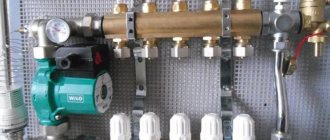Classification of air ducts
The design of the duct affects the connection method.
The design features of the system influence the choice of connection method. Also, the method of docking depends on the operating conditions and parameters for the removal of contaminated air.
Round and rectangular
According to their geometric shape, round and rectangular structures are distinguished. The advantage of the first option is that there is no risk of vortex flows. The noise level is lower here. This type of duct is more often used in industrial premises.
For residential buildings, a rectangular design is better suited. Thanks to its high throughput, it provides good ventilation. It is easier to hide such a system under finishing material. Thanks to its tight fit to the wall, the product does not take up much usable space.
In rare cases, triangular cross-section elements are used to form an air conditioning system. They are important for the interior.
Rigid and flexible
An example of a rigid air duct made of plastic pipes.
Rigid air ducts have different shapes: round, square, rectangular. Aluminum, stainless steel, and polymer materials are used to manufacture the structure. Flexible options are only round in shape. They are made of aluminum, textiles, PVC. To give additional rigidity to the product, wire is used. An effective system combines both types of ducts.
Air ducts are located inside the wall or outside it. The first option is a ventilation shaft in a permanent structure. It is used in residential areas. External ductwork is more suitable for industrial or technical spaces where design is not always important.
Features of air duct installation
The main requirements for the installation of a building ventilation system boil down to ensuring that the indoor air environment meets the design parameters.
This is achieved through:
- sealing air ducts;
- maintaining proper operating conditions;
- timely repair and replacement of faulty equipment.
The methods and methods of installing an air duct depend on its shape and size. When laying a pipeline in an unheated room or outside the building, the pipeline is insulated to prevent the formation of condensation.
Ventilation installation stages:
- assembly of system structural elements, including ventilation pipes, fans, heaters, humidifiers, switchgear and filters;
- connecting air ducts to the ventilation system;
- connection to the general electrical network;
- testing of the finished pipeline system and equipment to verify functionality. If failures occur, the operation of individual structural elements is adjusted.
When installing round air ducts, an auxiliary connecting part is used - a coupling or nipple, flange, bandage. The first two types of fastening are installed outside the equipment or inserted into the inside.
This connection is most widespread due to its ease of installation.
In practice, a method of connecting air duct parts with a circular cross-section using a bandage is rarely encountered. It is placed over the equipment on the curved ends of the part.
Sequence of installation of rectangular pipes:
- calculation of the required length of the air duct, including fittings;
- fastening to the wall of the room using a bracket or a pin, traverse, punched tape, clamp;
- connecting equipment to the ventilation duct;
- checking the tightness of the connection by blowing air with a fan.
The excess edge of the air duct is cut off with a hacksaw or pipe cutter, after which the cut surface is cleaned.
When installing it in a horizontal position, connecting parts are used - fittings, clamps and clamps, flanges and tires. They should be located at a distance of 1 m along a horizontal line, and 1.8 m along a vertical line.
It is allowed to use punched tape for installing pipes with a diameter of 100-200 mm, regardless of their cross-sectional shape.
Installation of galvanized models is carried out using a connecting piece - a clamp. It is suspended horizontally from the ceiling plane with a pin.
The height of the traverse suspension is adjusted with nuts. The vibration created by the air flow is damped by rubber, which is inserted at the junction of the support and the equipment.
Sequence of operations:
- marking the points where the air duct fastenings will be installed and then fixing them;
- assembly of individual parts of a network designed to remove polluted air;
- insertion of devices that tightly cover the upper end of a pipeline installed in a vertical position.
The installation method depends on many factors - the functional purpose of the building, the location of the pipeline - horizontal or vertical, location.
The possibility of using cold or hot welding cannot be ruled out, making it possible to hermetically connect individual sections of the pipeline. They are available in standard length - 125 mm.
Flexible air duct installation technology:
- marking the axis of the ventilation duct and the main pipeline line;
- installation of fasteners;
- determining the required pipeline length;
- connection to the ventilation grille;
- sealing joints of individual parts of the pipeline.
The cross-sectional area of the pipes is selected taking into account the calculated air exchange value and the maximum permissible air flow rate. The air duct should be suspended on metal rings with a diameter of 3-4 mm.
The distance between them should be no more than 2 m. They are attached to a supporting cable, which stretches along the entire length of the pipeline.
Welding methods
The welded method of connecting an air duct is considered the most reliable.
Craftsmen rarely have to connect air ducts to each other using welding, since the process is expensive. This method is used if special requirements are imposed on the tightness of the structure. The welding process can be manual or mechanized.
Manual
Electric arc welding is used if the material thickness is more than 1.5 mm. Gas equipment is necessary if the metal has a thickness of 0.8 mm. The second method is used infrequently.
Mechanized
The mechanized welding method can be semi-automatic or automatic. It is used in enterprises.
Popular types of metal air connections
Methods for connecting metal air ducts are divided into welded and seam. In the first case, the edges of adjacent elements are welded to each other using a welding machine. To dock using the second method, additional equipment will be required.
Eurobus mounting rail
To connect rectangular ventilation pipes, eurotires in the shape of the English letter L are often used. They are screwed with self-tapping screws onto the edge of the shaft element in a mirror image and installed on an adjacent part.
At the corners of the channel, the tire is fixed with special corners. Direct connection of air duct parts to each other is carried out using mounting brackets, sealants and sealing tape.
Nipple and coupling
A coupling or nipple connection is used in most round highways, as it takes little time and is quite simple to perform. Both docking elements have a central curved rim and 2 free docking ends. The nipple is mounted inside the ventilation duct, and the coupling is placed over the ends.
When using couplings, fixation is achieved using clamps. The nipple connection implies the presence of a sealing gasket.
Rack connection
Installation of rectangular ducts using slats mounted on edging or eurobus is used when arranging air ducts in rooms with limited ceiling heights.
To ensure tightness, rubber or polyvinyl chloride seals are installed at the joints.
Bandage connection of air ducts
In the case of installation of ventilation shafts with increased insulation characteristics, a bandage is used - an element similar in functionality to clamps. To install it, the edges of the ventilation ducts are beaded. Then sealant is applied and the bandage is clamped.
Connection types
Nipple connection of the air duct
The connection of ventilation pipes to each other is carried out by welding or flanging. In addition, the elements can be fixed with a bandage, nipple or coupling.
Welded
It is possible to connect air duct fragments by welding if they are metal and their wall thickness exceeds 1.5 cm. More often, this method is used in industrial premises where harmful gases accumulate. In this case, the seams should be as tight as possible. Galvanized materials require highly skilled welding to avoid corrosion in the seam area.
Nipple
A nipple is a part of a pipe in the middle of which there is a convex rib. It is inserted into the main structure. The same rib is used for fixation. Another section of the air duct is put on the product. The joint is sealed with metallized tape.
The nipple connection is made using a coupling. Its diameter is larger than the main pipe. The coupling can combine 2 fragments of the structure. The edge in this case is located on the inner surface of the element. This method is used to connect round air ducts.
Flanged
Flange for joining two parts of the air duct
According to GOST, pipes can be connected using the flange method. Spot or solid welding is used to fasten parts. The flanges are secured to each other with nuts and bolts, as well as rivets. To ensure reliable sealing of the weld, it must be painted. A sealing gasket is placed between the steel elements. Despite its effectiveness, the flanged connection of air ducts is labor-intensive to manufacture and expensive.
Bandage
The bandage method of connecting structures is in demand at chemical industry enterprises. It provides high reliability of the joint, but the manufacturing process itself is expensive, therefore it is unpopular for domestic use. The bandage is attached over the connecting seam. Before this, the ends require flanging. The bandage space is filled with a chemically inert sealant. This method is used to connect plastic air ducts to each other.
Methods for joining air ducts
Methods for connecting air duct parts can be divided into welded and seam. For a welded joint, a sufficient thickness of steel or aluminum of 1.5 mm is required. Thin-walled ventilation pipes are connected using folding.
Note! Welded joints on galvanized pipes require highly professional welding. A burnt-out layer of zinc at the junction during operation of the structure will become a source of metal corrosion, which will reduce the durability of communications.
Seam joints come in several configurations. Most used:
- on a simple fold;
- on the fold with a latch;
- on the fold with flanging;
- on the connecting strip;
- on the cross fold;
- end-to-end;
- overlap;
- corner.
Note! Rolling the seam fastening threatens to displace the connected parts of the pipeline relative to each other along the guide axis.
In addition to welded and seam connections, the following connections are used:
- on flanges;
- using a coupling or nipple;
- into the bell;
- using a tire;
- on a bandage.
Flange connections
Pipes for ventilation systems (regardless of their design and cross-section) are connected using specially made flanges. The parts are attached to the pipes using spot welding or a continuous weld. The flanges are connected to each other by fastenings: rivets or bolts with nuts. If mounting bolts are used, they should all be placed on one side.
We recommend that you read: How to make the transition when replacing pipes from metal to polypropylene?
Note! It is most preferable to connect the flanges with rivets specially treated with anti-corrosion protection.
In practice, spot welding is often used to connect flanges to each other. This may threaten rapid depressurization of the system due to metal corrosion in the future. To give additional protection to the welded joint, it is recommended to carefully paint the flanges. Welding is considered a quick and inexpensive way to install ventilation pipes.
To make the connection tight, a sealing gasket is placed between them on the steel flanges. What materials are allowed to be used for sealing joints of air ducts are officially set out in SNiP 3.05.01-85.
Flange connection of air ducts is a universal, reliable method. However, additional parts are expensive to manufacture and the assembly process is labor intensive. Such connections are used when installing dense air ducts with a high level of requirements.
Connecting air ducts with a coupling or nipple
An equally common way to connect ventilation pipes is to use a coupling or nipple to connect the joint.
A coupling (or external nipple) is an additional piece of pipe whose diameter is slightly larger than the diameter of the main pipeline. The joint is closed with a coupling, putting it on the pipeline. To seal, all joints are coated with a special compound (sealant), which is selected depending on the upcoming operating conditions. There are couplings that come complete with a sealing gasket. When installing such couplings, sealant is not used.
A nipple is a piece of pipe that is smaller in diameter than the main pipeline. It is inserted into the joint from the inside. Here, a special aluminum tape is used for sealing.
Connecting air ducts to each other using a nipple has become more widespread on round structures. They are used less frequently on rectangular sections.
Socket connection
This type of duct connection is used only for pipes with a round cross-section. To make a socket connection, there must be an expanding section at one end of the pipe or the entire structure must be cone-shaped. The pipes are inserted into each other without securing them additionally. For sealing, a sealing gasket or plastic sealant is used. The socket connection has become most widespread during the installation of sandwich chimneys and natural draft household hoods.
Note! The socket connection does not have the necessary degree of reliability and tightness, which is necessary for the installation of air ducts with aggressive or high-temperature gases.
Eurotire
Special tires are produced to connect parts of rectangular air ducts. These parts are similar to connecting flanges for rectangular pipes that are disassembled for parts. The part is a piece of galvanized metal profile that resembles the letter G. The elongated side has a size of 20 to 30 mm. The tire comes complete with a seal and special corners.
Note! Additional sealing is required at the corners of the connection.
The bus connects air ducts that are used to transport non-hot, chemically inert air masses.
We recommend that you read: How to properly install a ceiling-passage assembly for a chimney in a bathhouse
Bandage
Joining of air duct parts using a bandage is used in chemical plants. This is a highly reliable connection. However, it is not economically profitable to use it for household communications, since the production of the bandage itself is an expensive process.
The bandage is installed over the junction of the pipeline. The ends to be joined are preliminarily flanged. The space of the bandage is filled with sealing materials - heat-insulating or chemically resistant mastic.
Equipment and materials used
Resistance welding machine for manual connection of a stainless steel air duct
To create a nipple connection of air ducts or a welded joint, the following tools and materials are required:
- stainless steel;
- tape measure, marker;
- hammer, pliers;
- vice;
- metal cutting tools;
- sealant and gun for applying it;
- welding machine;
- pipe fragments of the appropriate diameter.
The technology for installing the structure must be followed down to the smallest detail. If you combine parts of the duct without sealing, the functionality of the system is impaired. The connection of the structure to the hood is carried out taking into account the diameter of all parts. Before installing the air duct, a drawing of it is prepared.
Methods for sealing nipple joints
The connection of two pipes “one into the other” cannot be made airtight without the use of additional measures. To ensure that the joint is as tight as possible and does not allow air or moisture to pass through, additional materials are used, among them the following can be distinguished:
- rubber or rubber cuffs, which are purchased separately or complete with a nipple;
- tape sealants or self-adhesive tapes are used quite widely, but they last a long time only in dry operating conditions.
Tape sealants can be made from polymers or aluminum. In the presence of high humidity or lack of heating, the tapes quickly deform. The joint loses its tightness and the seal has to be replaced with a new one. This factor should be taken into account when choosing a method for sealing the nipple connection. Rubber cuffs are durable but expensive. Self-adhesive tapes are cheaper, but do not tolerate a damp and aggressive environment for a long time.
Advantages and disadvantages of welded joints of air ducts
If the weld is poorly made, it will come apart over time.
The welded joint is permanent and does not require additional fixing elements. It has the following advantages:
- possibility of manufacturing large-sized structures;
- weight reduction compared to cast elements;
- high strength and reliability of the joint;
- relatively low labor intensity in domestic conditions.
Residual stress often occurs in a welded joint. In this case, the technical properties of the metal change, which loses its strength over time. If welding is not used skillfully, the seams may be defective. After using the device, the joints must be checked visually and using tools. When the metal is locally heated in the thermally affected area, the mechanical properties of the material can change.
Scope of application
The correct seam ensures long-term trouble-free operation of ventilation.
Air ducts must be connected to the hood in any room. Welded joints are used in smoke removal systems, moving air saturated with moisture or acid fumes. They are necessary in structures inside which there is high pressure or hot air masses circulate.
This type of connection is used in basements and attic floors. It is suitable for residential and technical premises. This type of air duct installation is fireproof, durable and airtight.
The welded connection of the air duct allows for good quality ventilation. However, work must be carried out strictly according to the instructions.
Types and types of air ducts
The air duct refers to the main element of the ventilation system - a pipeline connected by special shaped parts.
Its functional purpose is to remove polluted air and supply fresh air. The structure is assembled from pipes, the diameter of which must be justified by calculation.
As practice shows, the most popular diameters are 100, 125, 150, 250, 315 and 355 mm.
Air ducts are divided into types:
- rigid - easy to install. In them, the air flow moves without creating noise and with little vibration;
- flexible - ideally meet the requirements for equipment by building regulations for noise insulation and level of resistance.
Manufacturers produce pipes with round and rectangular cross-sections, which can be used for installing air ducts. Each type has certain advantages and disadvantages, so their selection must be carried out on an individual basis.
In large areas, it is recommended to install galvanized steel ducts that can withstand weathering and corrosion. For example, in a production workshop where the air contains chemically active gases and vapors.
The flexible type should be used on backbone sections of the network with a short length.
Types of flexible pipes manufactured by domestic manufacturers:
- smooth - a coating is made on both sides of the pipe, eliminating pressure loss;
- corrugated - most in demand due to the possibility of efficient use of the inter-ceiling space;
- frame - products are characterized by increased rigidity, while maintaining flexibility due to a frame made of metal wire or polymer thread;
- frameless - made from solid sheets of aluminum.
